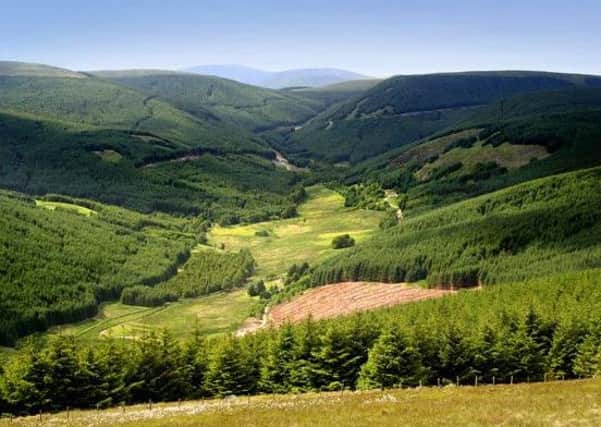Andrew Heald: Sustainability is seeing the wood for the trees


The forestry sector often uses the term sustainability, but what does it actually mean in a forestry context? This question is particularly important in light of a recent report showing the UK is potentially reducing its area of productive forestry.
The four countries of the UK have all committed to expand their areas of forest cover, but only Scotland is clearly doing so. Forests are lost for many reasons, including new housing, industrial development, windfarms and conversion to other habitats. However, if a greater area of new forest is planted, forest cover increases. That is happening in Scotland, though we do need to examine whether we are losing some of our productive forests.
Advertisement
Hide AdAdvertisement
Hide AdThe large majority of Scotland’s forests are actively managed to a world-leading standard, with the support of environmental and conservation groups with an interest in forestry. It is widely accepted these forests are managed sustainably.
As a society, there is significant interest in sustainable consumption – of food, materials and energy - and how it impacts on the environment and people. Wood is infinitely renewable; when one tree is harvested, another one (and usually more) is planted. We are not depleting the earth’s resources. When that tree comes from a forest that is sustainably managed, the environment benefits.
Yet the UK is the world’s third largest net importer of timber, behind China and Japan. Only about 20 per cent of the wood we consume in the UK comes from our own forests, the majority from Scotland.
Given the high standard of our forest management and the beneficial impact of using wood, it makes sense to produce as much wood as we can here. However, a recent Forestry Commission report shows the area of productive forest has declined in recent years (95 per cent of the productive timber we harvest and most world trade is in softwood – from conifer trees – which is used in the wood products we all use, everything from timber housing frames to fencing and packaging).
The Forestry Commission report was prompted by concerns about the level of restocking in both public and private forests. The harvesting of wood has increased from about 9 million tonnes in 2010 to 12 million-plus now, but the level of restocking young trees hasn’t kept pace.
In Scotland, we marry sustainable consumption with sustainable land management and, in the process, support a £1 billion forestry and timber sector, employing more than 25,000 people.
This is built around mainly Sitka Spruce, but set in forests that contain a range of tree species, structured carefully to fit into the landscape and always conscious of impacting positively on biodiversity, recreation and waterways.
Forestry regulations limit any single productive species in a forest to 75 per cent, with the balance made up of native broadleaf trees and open space. Most productive forests work with tougher international standards, with a 65 per cent limit. This can create challenges; the proportion of productive conifers is important for economic sustainability and they also give us the products we need to build homes, for our kitchens, for our gardens.
Advertisement
Hide AdAdvertisement
Hide AdIn May 2014, I wrote a report called The Missing Millions to highlight a shortage of UK timber in the 2030s and 40s due to the lack of new planting in the 1990s and early 2000s. It highlighted the need for more new forests to be planted now. The new Forestry Commission report suggests that the future shortfall could be worse due the current and ongoing lack of restocking of our existing forests.
So why should politicians, foresters and environmentalists be concerned?
As the vast majority of imported timber is softwood, this “off-shoring” means we are also offshoring our environmental responsibilities, and impacting on rural jobs and investment here. Producing more of the wood we consume is good for the environment and good for rural communities.
So what’s the solution? Plant more trees. Plant more of the right trees. Plant them in the right places. Start now.
And make sure we replant the trees we harvest.
If we are genuinely interested in sustainability, not just at a local level but also at a European and global level, we need to take responsibility for more of our forest footprint. We need, like we do increasingly with food, to link consumption with production, and plan for a sustainable future for Scotland’s forestry sector where we protect and expand a valuable resource.
• Andrew Heald is technical director of Confor: promoting forestry and wood www.confor.org.uk